In the last of four columns on planning a thru-hike, two trail angels offer advice based on the hundreds of thru-hikers they've befriended and assisted along the Pacific Crest Trail .
Trail angels are people who make a hobby of helping thru-hikers. They may do something as simple as offer rides from trailhead to town and back, or as ambitious as welcoming throngs of people into their homes every year. As observers and helpers of numerous thru-hikers, trail angels are in an excellent position to notice which people thrive on a long trail and which ones drop out after a few weeks — and why.
Educate yourself, avoid nasty surprises
Since 2003, Andrea and Jerry Dinsmore have opened their northern Washington home, Dinsmore's Hiker Haven (mile 2476.5), to hundreds of Pacific Crest Trail thru-hikers. This year the couple relocated from Skykomish to Baring, Wash., where they continue to offer a place to crash (bunks and two acres of grassy tent space), laundry, showers, and a spot to mail resupply boxes, all without charge (though they accept small donations).
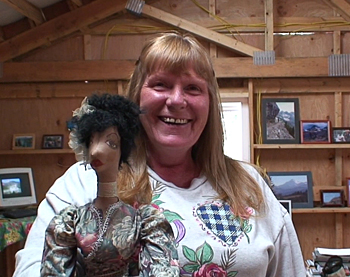
Trail angel Andrea Dinsmore (and one of her handmade dolls) in the original Hiker Haven she and husband Jerry built in Skykomish, Wash. (Photo: Gary Chambers; view the author's video of Hiker Haven)
Andrea, whose busiest time of the year is late summer and early fall, advises hikers looking forward to a trek next year, to spend a few months educating themselves thoroughly — and to get the most up-to-date editions of trail guides, data books, and companion volumes for their trail. “Life and the trail have changed a lot,” she wrote me in between helping this year's wave of northbound thru-hikers racing for the Canadian border.
Things do change from year to year. The fishing resort you counted on to provide a room out of the rain may have closed. The campground store that used to be so well stocked now carries only fishhooks and canned goods. And a recent reroute might mean you can no longer meet your spouse on that convenient road crossing you were counting on. A well-educated thru-hiker avoids nasty surprises.
Like the Dinsmores, Donna and Jeff Saufley have befriended hundreds of backpackers on the Pacific Crest Trail. For the past 13 years, they've offered mail drops, accommodations, showers, and laundry, all from their home, Hiker Heaven, in the Mojave Desert town of Agua Dulce (mile 454.4).
Donna told me, “Hikers often have the misconception that Southern California is sunny and warm all of the time. The fact is that desert temperatures can plummet at night, and the trail passes through mountainous terrain at substantial elevations (upwards of 9,000 feet). Spring storms have often brought snow, rain, and freezing temperatures, even here in 'sunny' SoCal. Not being prepared puts you, and potentially SAR (search and rescue) teams, at risk.”
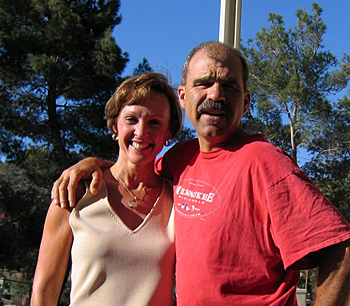
Trail angels Donna and Jeff Saufley at their Mojave Desert Hiker Heaven home. (Photo: Gary Chambers)
Donna has taken up backpacking herself and knows from experience as well as observation what makes for a good trip. She recommends hiking and camping in bad weather during training trips, to make sure your gear will hold up when you need it most.
At the other end of the trail in northern Washington, Andrea sees a few hikers in June and July, who begin in Canada for a southbound thru-hike. Despite already having hiked 175 or so trail miles through the rugged North Cascades, Andrea said, “Too many SOBO (southbound) hikers think it's going to be a walk in the park.”
Andrea noted that even the very experienced northbound thru-hikers she sees in September can be overly optimistic about the weather they'll encounter in the remainder of Washington State: “Some are sending home cold weather gear too soon. Some are not carrying enough food for the North Cascades.” In Washington's variable and extreme climate, hikers can battle heat and mosquitoes one day, and be slogging through rain and snow the next. And cold weather requires more calories to burn for warmth.
Trail angels agree with successful thru-hikers that training is crucial. Donna wrote, “It's amazing to me how many people plan a four- or five-month walk but don't get physically prepared for it ahead of time. Walking all day, every day, is a lot to ask your body — and your poor feet — to do, and without conditioning you risk all types of physical breakdowns and the premature end of the journey.”
Be prepared, but not fearful
Since Agua Dulce is 455 trail miles from the PCT's southern end point, Donna and Jeff see a lot of thru-hikers who have been on the trail for a month or so. Many are physically and mentally ready to tackle the hottest part of the desert and then the challenges of the Sierra — and some are ready to quit. And it's not necessarily aches and pains that bother backpackers the most. It's also anticipated dangers and loneliness.
Based on her experience as both trail angel and backpacker, Donna wrote, “The dangers exist, but are often given too much airtime in our minds, breeding fear and worry that are quite unnecessary, and sometimes result in our setting up barriers and limits that keep us from living fully and joyously. Most of what we fear never happens. Be prepared and remember the old adage, 'cross that bridge when you come to it.'”
Alone versus lonely
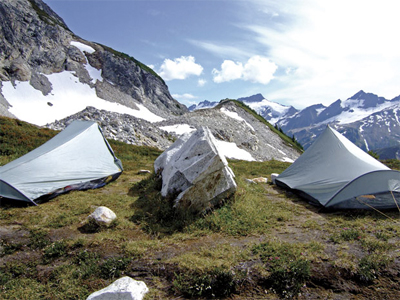
Knowing whether you prefer to hike solo or with others can mean the difference between being alone or lonely. (Image from Washington's Glacier Peak Wilderness courtesy of Eric Valentine and the PCTA)
“Loneliness is another thing altogether,” continued Donna. “I believe how well someone deals with loneliness has more to do with who they are and what they're comfortable with rather than preparation. In this world of 24/7 instantaneous connectedness, there are people (probably the majority) who cannot tolerate being left alone with quiet and their own thoughts for a long period of time. Obviously, those folks with those preferences should plan to hike with others. In my opinion, there is a big difference between being lonely or alone, and how comfortable one is with oneself determines which state you're in. Among hikers you find people who treasure solitude. You really need to know yourself and honestly assess where your comfort zones are.”
The ideal solution for people who want to hike as part of a team would appear to be hiking with a spouse or significant other. But, as many people have learned the hard way, the stresses of a thru-hike can mean an end to romantic relationships that seemed unbreakable off the trail. And even couples who find the trail experience brings them closer together aren't immune from loneliness.
Karen Somers, aka Nocona, has thru-hiked (and bicycled) thousands of miles with her husband, Andy, who goes by the trail name Bald Eagle. She told me, “Even couples experience loneliness. You begin to function more as a unit and you truly feel 'lonely' when you lose track of other hikers and are alone for several days.”
Some final trail advice
While Donna and Andrea's trail angel advice comes from years of helping PCT thru-hikers, their suggestions, especially those about getting in shape mentally and physically before starting, apply to any long trail.
As you consider or begin planning your own long-distance thru-hike, here is some final trail-specific advice to consider:
Appalachian Trail hikers should give serious thought to whether they want to count on reaching a shelter every night, or would rather carry a tent. AT hikers must also give extra thought to protecting their food from bears and vermin at popular shelters and campgrounds.
Another issue is whether to stay near paved roads. Some AT backpackers (especially women), concerned about the possibility of crime, decide ahead of time to avoid sleeping at shelters easily accessible from highways.
Mentally, AT hikers must prepare for the constant temptation to "yellow-blaze" (hitchhike) their way around difficult stretches or through bad weather.
Continental Divide Trail backpackers need to spend adequate time planning which direction they'll hike — the majority hike northbound, starting at the New Mexico-Mexico desert border and ending at the Montana-Canada border in Glacier National Park — and how they'll reach the beginning and leave the end of the trail. With the trail still incomplete, CDT hikers also need to be rock-solid navigators, adept with maps and compass and comfortable with uncertain routes.
Finally, PCT thru-hikers need entry permits before they go into Canada. (You can print them out from www.pcta.org under the section on preparing for a thru-hike.) Hikers also should have passports in order to return to the United States after completing their hike.
Once you've accepted that committing yourself to a thru-hike has both its up and down sides (much like the trail), you're ready to take on one of the most wonderful experiences life can provide. Prepare thoroughly, and don't worry too much.
As Nocona wrote, “The hardest part of every thru-hike is getting to the trailhead. Once there, pre-hike anxieties disappear in the dust as you begin to walk towards your goal.”
Long-Distance Trail Book Suggestions
It's impossible to know what a thru-hike really feels like without getting out on the trail for at least several weeks. But there are a lot of books that give the reader a pretty good idea, including some that have nothing to do with backpacking.
Here are my favorites:
The Pacific Crest Trail: A Hiker's Companion by Karen Berger and Daniel R. Smith, Countryman Press, 2000. That rare combination of practical advice and fine writing.
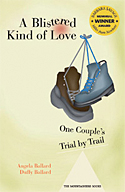 A Blistered Kind of Love: One Couple's Trial by Trail by Angela Ballard and Duffy Ballard, Mountaineers Books, 2003. Young couple endures six months on the PCT — and they get married anyway. Funny and insightful.
A Blistered Kind of Love: One Couple's Trial by Trail by Angela Ballard and Duffy Ballard, Mountaineers Books, 2003. Young couple endures six months on the PCT — and they get married anyway. Funny and insightful.
A Thru-Hiker's Heart: Tales of the Pacific Crest Trail by “No Way” Ray Echols, Tuolumne Press, 2009. Before he died in a fall from the PCT near Deep Creek, Ray wrote at length about the people and places of the trail. His widow, Alice Tulloch, published his humorous musings and his no-holds-barred opinions of everything from horses on the trail to the Los Angeles Department of Water and Power.
On the Beaten Path: An Appalachian Pilgrimage by Robert Alden Rubin, The Lyons Press, 2000. Probably the best written of the many books about hiking the AT, but also the saddest. Rubin is one of those who set out to find himself on the trail, only to be disappointed.
 A Walk in the Woods: Rediscovering America on the Appalachian Trail by Bill Bryson, Broadway, 1999. Hilarious. Think “Laurel and Hardy Hike a Tiny Bit of the AT.”
A Walk in the Woods: Rediscovering America on the Appalachian Trail by Bill Bryson, Broadway, 1999. Hilarious. Think “Laurel and Hardy Hike a Tiny Bit of the AT.”
In the Throne Room of the Mountain Gods by Galen Rowell, Sierra Club, 1982. This story about the 1975 American K2 expedition and how it went spectacularly wrong looks long and hard at group dynamics under extreme conditions.
Bold Spirit: Helga Estby's Forgotten Walk Across Victorian America by Linda Lawrence Hunt, Anchor Books, 2005. Inspiring but also depressing story of two women's walk across the United States, only to see their story hushed up afterward.
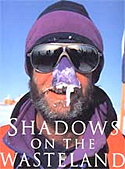 Shadows on the Wasteland: Crossing Antarctica with Ranulph Fiennes by Mike Stroud, Overlook Press, 1996. How to resist the temptation to kill your partner while pushing yourself to your absolute limits.
Shadows on the Wasteland: Crossing Antarctica with Ranulph Fiennes by Mike Stroud, Overlook Press, 1996. How to resist the temptation to kill your partner while pushing yourself to your absolute limits.
Angels in the Wilderness: The True Story of One Woman's Survival Against All Odds by Amy Racina, Elite Books, 2005. California woman survives horrific injuries while hiking alone in the Sierra.
A Journal of Ramblings Through the High Sierras of California by Joseph LeConte, Yosemite Association/Heyday Books, 1994. A sort of 1870s version of A Walk in the Woods, but on horseback.
Zero Days: The Real-Life Adventure of Captain Bligh, Nellie Bly, and 10-Year-Old Scrambler on the Pacific Crest Trail by Barbara Egbert, Wilderness Press, 2008. OK, I confess — I wrote this book. It's a good read, if I do say so myself.
For more information on preparing for a thru-hike, read the full series:
“Planning a Thru-Hike: Part 1”: tips on choosing a trail, gear, training, and resources.
“Planning a Thru-Hike Part 2”: What am I doing out here? And what am I going to eat and drink?
Planning a Thru-Hike: Part 3”: advice from Triple Crown thru-hikers.
“Planning a Thru-Hike Part 4”: advice from trail angels.

 by Barbara Egbert
by Barbara Egbert









